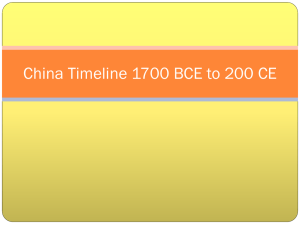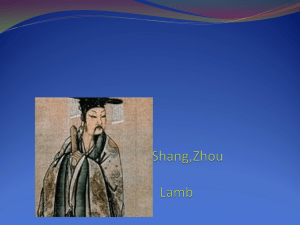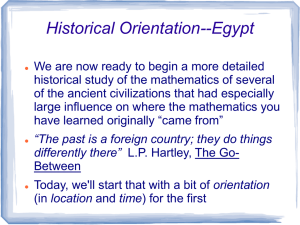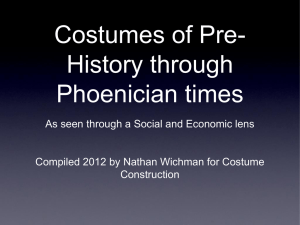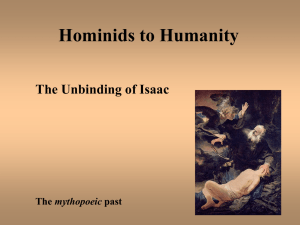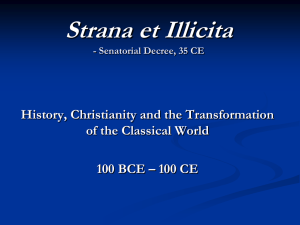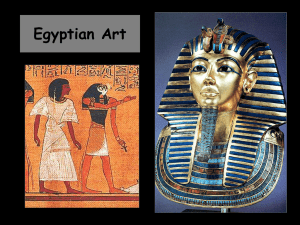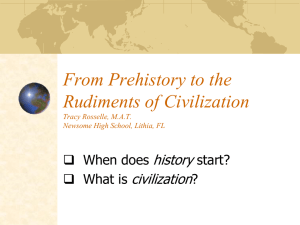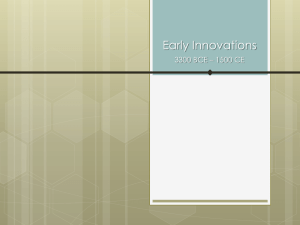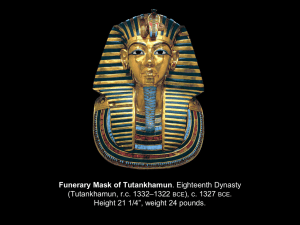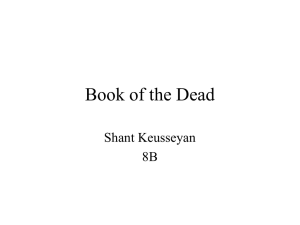Images - WordPress.com
advertisement
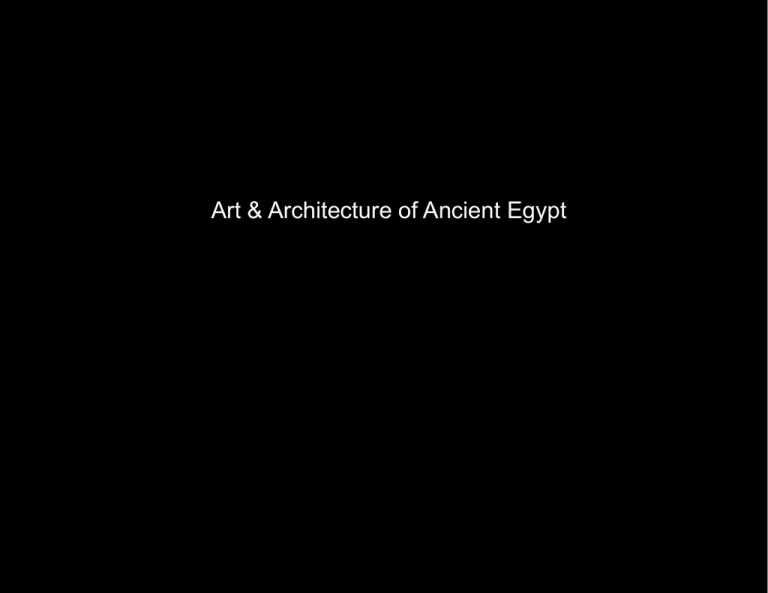
Art & Architecture of Ancient Egypt Mask of Tutankhamun's mummy Pharaoh of Egypt Reign ca. 1332–1323 BC, 18th Dynasty The Palette of Narmer (Left View). Early Dynastic period, c. 2950 BCE. The Palette of Narmer (Left View). Early Dynastic period, c. 2950 BCE. The Palette of Narmer (Right View). Early Dynastic period, c. 2950 BCE. Serekh (area where the royal name is inscribed) “Dip” or impression for grinding cosmetics Link: Excellent formal and contextual analysis of the Palette of Narmer Egyptian Symbols. The Egyptian Canon of Proportions Leonardo da Vinci, c. 1487 Ideas to keep in mind for Ancient Egyptian Art 1) conventions for royal portraits in Ancient Egypt 2) link between gods and kings, often realized in temple architecture and temple art 3) Ancient Egyptian belief in the afterlife, “ka,” which was manifested in the design of funerary architecture and funerary art Ancient Egyptian Art Dynastic Period: 2950 – 2575 BCE Old Kingdom: 2575 – 2150 BCE Middle Kingdom: 1975 – 1640 BCE New Kingdom: 1539 – 1075 BCE Third Intermediate Period/Late Egyptian Art: 1075 - 332 BCE Ancient Egypt: Early Dynastic Art c. 2950 – 2575 BCE Mastaba to Pyramid. Mastaba Tomb, Saqqara The Step Pyramid and Sham Buildings, Funerary Complex of Djoser, Saqqara. Height of pyramid 204’. Djoser Pyramid, Saqqara Meidum Pyramid, c 2600 BCE Great Pyramids, Giza. Fourth Dynasty, c. 2575–2450 BCE. Height of pyramid of Khufu, 450'. Model of the Giza Plateau. Menkaure and a Queen. Fourth Dynasty, 2490–2472 BCE. Height 54 1/2”. Seated Scribe. Fifth Dynasty, c. 2450–2325 BCE. Height 21”. Butcher. Fifth Dynasty, c. 2450–2325 BCE. Height 14 5/8”. (l) Tomb decoration depicting Annubis mummifying and (below) scene from a Book of the Dead Met TOAH Link to a Book of the Dead Scroll: Section from the "Book of the Dead" of Nany, Third Intermediate Period, Dynasty 21, reigns of Psensennes I–II, ca. 1040–945 B.C.Egyptian; Western ThebesPainted and inscribed papyrus Brooklyn Museum sends a mummy for a CT scan. They’ve just discovered that the mummy Prince Pasebakhaienipet has his heart still in place and a piece of reed stuck in his throat. Link to the Brooklyn Museum Mummy video Worker graves at Giza – video clip from History Channel “Chasing Mummies” here shows a worker cemetery. Karnak Temple is a vast temple complex in Luxor dedicated primarily to Amun and dating from as early as 2000 BC. Large Kneeling Statue of Hatshepsut Period: New Kingdom Dynasty: Dynasty 18 Reign: Joint reign of Hatshepsut and Thutmose III Date: ca. 1473–1458 B.C. The Rosetta Stone Egypt, Ptolemaic Period, 196 BC Examples of the Egyptian demotic script on the left and Egyptian hieroglyphics on the right flanking classical Greek script in the middle. On the Rosetta Stone itself, the ordering of the scripts is Egyptian hieroglyphics on the top, followed by the demotic script with Greek script on the bottom. Definitions “Convention” An artistic convention is a method or style of conveying or portraying something that is widely used and recognized as meaning a certain thing (or conforming to a certain style). “Contour” Contour drawing shows the outline of the subject, and not the volume or mass of an object. Link to Wiki entry on Ancient Egyptian Pantheon “Under King Djoser’s Burial Chamber” link here
